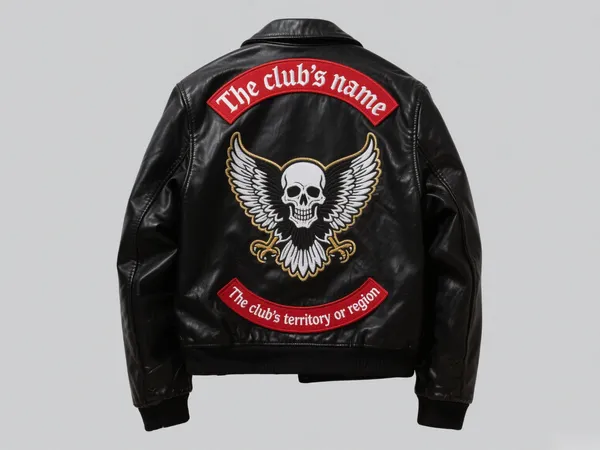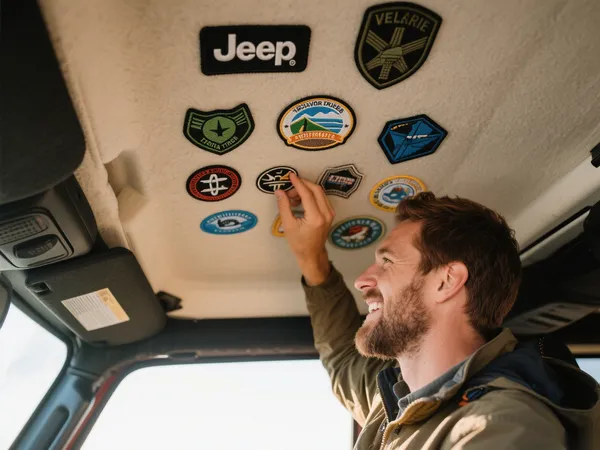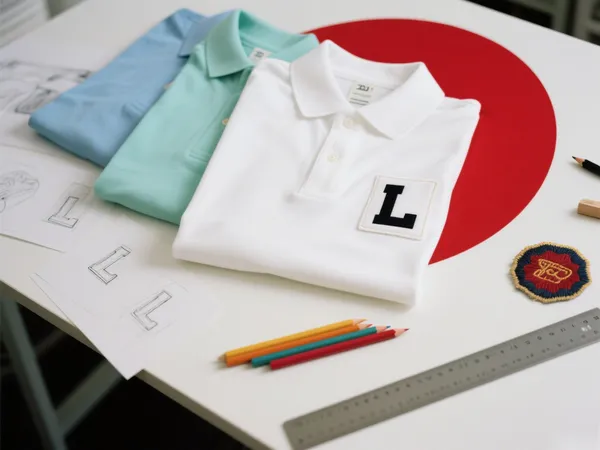Individuelle Patches sind eine großartige Möglichkeit, Kleidungsstücken, Taschen, Hüten und Ausrüstung Persönlichkeit, Markenzeichen oder Flair zu verleihen – aber nicht jeder hat die Zeit oder das Werkzeug zum Nähen. Deshalb selbstklebende Rückseite für Patches kommt ins Spiel. Egal, ob Sie ein Anfänger in der DIY-Mode sind oder eine Marke auf der Suche nach effizienten Produktionsmethoden, Abzieh- und Klebeflicken bieten eine saubere, schnelle Lösung, die auf einer Vielzahl von Oberflächen funktioniert.
In diesem Artikel gehen wir darauf ein, was eine selbstklebende Rückseite ist, wie sie im Vergleich zu anderen Befestigungsmethoden für Flicken abschneidet, wo sie am besten funktioniert und geben Tipps für langanhaltende Ergebnisse.

Was ist eine selbstklebende Rückseite für Patches?
Kleberückseite für Patches bezeichnet eine Schicht aus druckempfindlichem Klebstoff oder thermoplastischem Kleber, die auf die Rückseite eines Pflasters aufgetragen wird. Diese Pflaster werden manchmal genannt:
- Abziehbare und aufklebbare Patches
- Selbstklebende bestickte Aufnäher
- Aufkleber-Patches
Sie sind gebrauchsfertig – ziehen Sie einfach die Schutzfolie ab und drücken Sie das Pflaster auf eine saubere Oberfläche. Manche sind nur vorübergehend haftend, andere sind für eine dauerhaftere Anwendung mit wärmeaktiviertem Kleber konzipiert.

Arten von Klebepflastern
🔹 Standardmäßig abziehen und aufkleben
Genau wie ein Aufkleber – ideal für den vorübergehenden Gebrauch, Bastelprojekte oder Platzierungstests vor der endgültigen Anbringung.
🔹 Wärmeaktivierter Klebstoff
Kombiniert den Komfort eines selbstklebenden Aufnähers mit der Haltbarkeit eines Aufbügelflickens. Nach dem Erhitzen mit einem Bügeleisen oder einer Presse haftet der Aufnäher sicherer.
🔹 Doppelseitige Klebefolien
Diese Blätter werden häufig mit nicht klebenden Flicken verwendet und können in die passende Form geschnitten und zwischen Stoff und Flicken gelegt werden.

Vorteile der selbstklebenden Rückseite für Patches
✅ Kein Nähen erforderlich
Perfekt für Leute, die nicht nähen oder das Material nicht durchstechen möchten (z. B. bei wasserdichten Jacken oder synthetischen Taschen).
✅ Schnell und sauber
Einfach abziehen, aufkleben und los geht‘s. Ideal für kurze Lieferzeiten, Events oder Probeplatzierungen.
✅ Vielseitige Anwendung
Funktioniert auf einer Vielzahl von Oberflächen – Kleidung, Karton, Kunststoff, Leder und mehr.
✅ Ideal für den vorübergehenden Gebrauch
Möchten Sie das Patch-Design häufig ändern? Dank der Klebeoptionen ist dies ganz einfach und ohne Beschädigungen möglich.

Zu berücksichtigende Einschränkungen
- Nicht geeignet für häufig gewaschene Kleidungsstücke sofern sie nicht verstärkt werden.
- Weniger haltbar als Optionen zum Aufnähen oder Aufbügeln im Laufe der Zeit.
- Kann Rückstände hinterlassen bei unsachgemäßer Entfernung.
- Haftet möglicherweise nicht gut auf strukturierten oder schmutzigen Oberflächen.
👉 Profi-Tipp: Verwenden Sie Flicken mit selbstklebender Rückseite als Platzierungshilfe vor dem endgültigen Nähen oder Bügeln.
Beste Anwendungsfälle für selbstklebende Patches
- Messen und Veranstaltungen – Temporäre Logos oder Markenzeichen auf Team-Shirts.
- Kinderbekleidung – Lustige DIY-Anpassung ohne Nähen.
- Corporate gifts – Aufklebe-Branding für Tragetaschen oder Produktverpackungen.
- Testlayouts – Überprüfen Sie die Platzierung des Designs, bevor Sie es dauerhaft anbringen.
- Sammler und Bastler – Zur Verwendung auf Pinnwänden, Notizbüchern oder Sammelalben.
Tipps für eine langanhaltende Anwendung
- Reinigen Sie die Oberfläche gründlich – Schmutz, Öle und Flusen verringern die Haftkraft.
- Üben Sie gleichmäßigen Druck aus über den Flicken, um eine sichere Verbindung zu gewährleisten.
- Vermeiden Sie es, den Stoff zu dehnen nach der Anwendung.
- Wenn möglich heißsiegeln um die Lebensdauer des Pflasters zu verlängern.
- Vermeiden Sie häufiges Waschen oder wählen Sie entfernbare Anwendungen.

Klebstoff vs. andere Trägermaterialien: Ein kurzer Vergleich
| Trägertyp | Application Method | Haltbarkeit | Wiederverwendbarkeit | Benötigte Werkzeuge |
|---|---|---|---|---|
| Klebstoff (abziehen) | Mit der Hand festhalten | Niedrig bis Mittel | No | Keiner |
| Aufbügeln | Hitze (Bügeln/Pressen) | Hoch | No | Bügeleisen/Presse |
| Aufnäher | Nadel und Faden | Sehr hoch | Yes | Nähset |
| Klettverschluss | Beide Seiten kleben/nähen | Hoch | Yes | Optional |
Fazit: Bleiben Sie bei der Einfachheit mit Klebepflastern
Kleberückseite für Patches ist ein Wendepunkt für alle, die unverbindlich individuell gestalten möchten. Auch wenn sie nicht immer die Langlebigkeit von aufnähbaren oder aufbügelbaren Alternativen erreichen, Abzieh- und Klebeflicken sind ein großartiger Einstiegspunkt für schnelle Dekoration, Prototyping oder kurzfristige Nutzung.
Egal, ob Sie Ausrüstung für eine Veranstaltung dekorieren, die Platzierung testen oder Ihren Accessoires einen frischen Look verleihen, selbstklebende Pflaster bieten Flexibilität, Komfort und Kreativität – ein Stick nach dem anderen.



